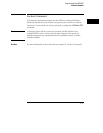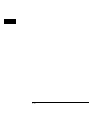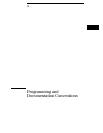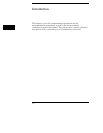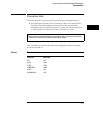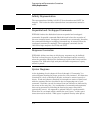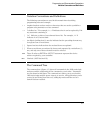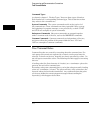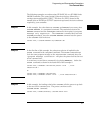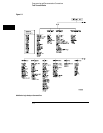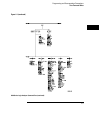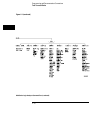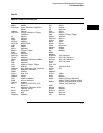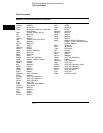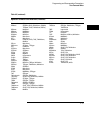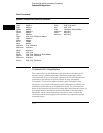
The following examples are written using HP BASIC 6.2 on a HP 9000 Series
200/300 Controller. The quoted string is placed on the bus, followed by a
carriage return and linefeed (CRLF). The three Xs (XXX) shown in this
manual after an ENTER or OUTPUT statement represents the device address
required by your controller.
Example 1 In this example, the colon between SYSTEM and HEADER is necessary since
SYSTEM:HEADER is a compound command. The semicolon between the
HEADER command and the LONGFORM command is the required <program
message unit separator> . The LONGFORM command does not need
SYSTEM preceding it, since the SYSTEM:HEADER command sets the parser
to the SYSTEM node in the tree.
OUTPUT XXX;":SYSTEM:HEADER ON;LONGFORM ON"
Example 2 In the first line of this example, the subsystem selector is implied for the
STORE command in the compound command. The STORE command must
be in the same program message as the INITIALIZE command, since the
<program message terminator> will place the parser back at the root
of the command tree.
A second way to send these commands is by placing MMEMORY: before the
STORE command as shown in the fourth line of this example 2.
OUTPUT XXX;":MMEMORY:INITIALIZE;STORE ’FILE ’,’FILE
DESCRIPTION’"
or
OUTPUT XXX;":MMEMORY:INITIALIZE"
OUTPUT XXX;":MMEMORY:STORE ’FILE ’,’FILE DESCRIPTION’"
Example 3 In this example, the leading colon before SYSTEM tells the parser to go back
to the root of the command tree. The parser can then see the
SYSTEM:PRINT command.
OUTPUT XXX;":MMEM:CATALOG?;:SYSTEM:PRINT ALL"
Programming and Documentation Conventions
Tree Traversal Rules
4–7



